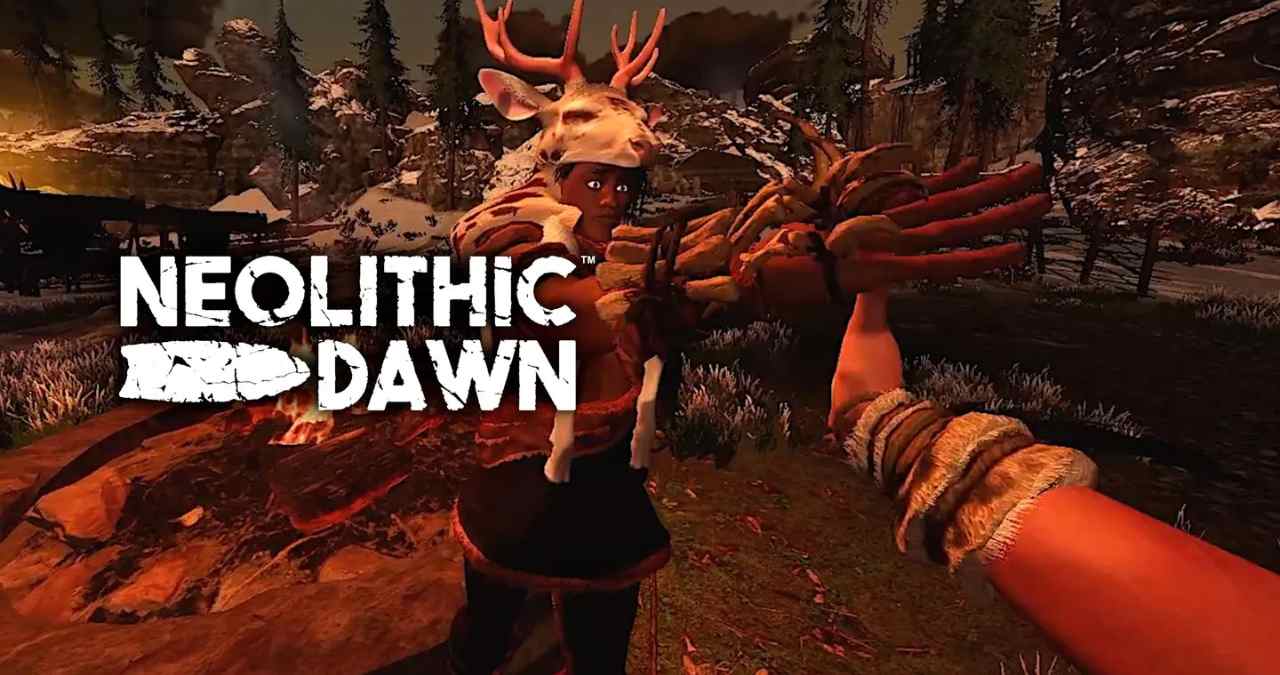Neolithic Dawn is heading to early access on July 9, bringing a fully immersive Stone Age survival sim to PC VR. Built from the ground up for virtual reality, it drops you into a prehistoric open world where everything shelter, tools, fire must be built by hand.
This isn’t a fast-paced action title or a light crafting game. It leans into a slower, more grounded survival rhythm, with physical interaction at the core of nearly every mechanic. If you want fire, you’re lighting it yourself. If you want shelter, you’re hauling every log into place.
Full VR Integration From the Ground Up
The entire game has been designed for VR from the start. Movement, interaction, inventory, and crafting all rely on motion controls and spatial awareness. Whether you’re skinning an animal or placing a support beam for your hut, the process is physical and tactile.
This isn’t just about immersion for immersion’s sake. The mechanics demand attention to rhythm and pacing. You’re not just clicking through menus to make tools. You’re carving them, shaping them, and using them manually. There’s a distinct emphasis on physical process, which slows things down but adds weight to every action.
Compared to survival games that offer VR as an afterthought, this approach feels more intentional. The controls support careful interaction rather than frantic gestures, aligning with the game’s more deliberate tone.
Survival Design Focused on Realism and Solitude
Neolithic Dawn places you in a solo survival scenario with minimal modern scaffolding. There’s no high-tech HUD, no fast travel, and no GPS-like map. You’re on your own in a vast wilderness where orientation and planning matter as much as inventory management.
The game draws from the realism-focused corner of the survival genre. Food, water, weather, shelter, and warmth are all critical. But the pace is measured. This isn’t about punishing you constantly. It’s about reinforcing the feeling of living at the edge of human history, where survival was about patience, skill, and timing.
The environment also plays a role in how you progress. Rivers, weather systems, and wildlife patterns all impact how you move and survive. It’s less about sandbox freedom and more about adapting to the world as it pushes back.
Visual Direction and Technical Details
Visually, the game avoids stylization in favor of naturalism. Forests are dense, lighting is dynamic, and structures look as raw as the resources used to build them. It doesn’t chase graphical realism in the photorealistic sense, but it aims for consistency. Nothing feels out of place or exaggerated.
The game launches first for PC VR platforms, with flat-screen and standalone versions potentially arriving later. For now, the focus is clear: a fully immersive survival experience built around VR’s strengths, not a hybrid product compromised by cross-platform demands.
While still in early development, it already covers the core survival loop. Fire starting, crafting, hunting, and base building are in. The dev team is using early access to expand these systems, fine-tune mechanics, and respond to player feedback in real time.
A Different Angle on VR Survival
What sets Neolithic Dawn apart isn’t novelty, but tone. It’s not chasing futuristic gimmicks or fast-paced multiplayer. Instead, it offers a quiet, physical, and thoughtful experience that’s rare in VR survival titles.
If most VR survival games feel like ports or arcade-style mashups, this one leans in the opposite direction. It embraces stillness, challenge, and slowness not as obstacles, but as the point. And that makes it stand out.
Virtual Reality Explorer & Game Reviewer
Always the first to plug in. VRSCOUT dives head-first into the most immersive VR worlds, analyzing mechanics, comfort, innovation, and that elusive “presence” factor. If he says it’s worth it, it probably is.




